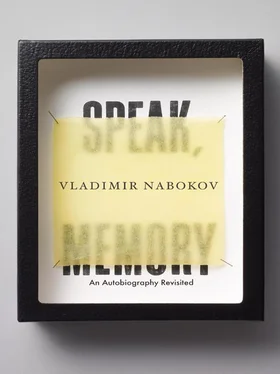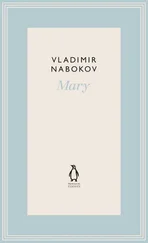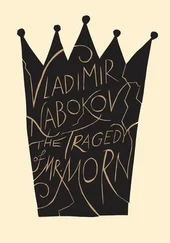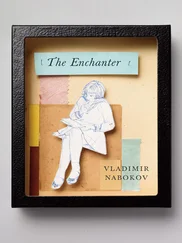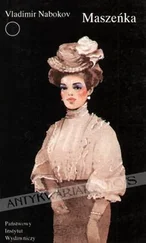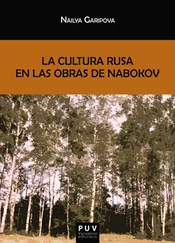Vladimir Nabokov - Speak, Memory
Здесь есть возможность читать онлайн «Vladimir Nabokov - Speak, Memory» весь текст электронной книги совершенно бесплатно (целиком полную версию без сокращений). В некоторых случаях можно слушать аудио, скачать через торрент в формате fb2 и присутствует краткое содержание. Город: New York, Год выпуска: 2011, ISBN: 2011, Издательство: Vintage International, Жанр: Биографии и Мемуары, на английском языке. Описание произведения, (предисловие) а так же отзывы посетителей доступны на портале библиотеки ЛибКат.
- Название:Speak, Memory
- Автор:
- Издательство:Vintage International
- Жанр:
- Год:2011
- Город:New York
- ISBN:978-0-307-78773-6
- Рейтинг книги:5 / 5. Голосов: 1
-
Избранное:Добавить в избранное
- Отзывы:
-
Ваша оценка:
- 100
- 1
- 2
- 3
- 4
- 5
Speak, Memory: краткое содержание, описание и аннотация
Предлагаем к чтению аннотацию, описание, краткое содержание или предисловие (зависит от того, что написал сам автор книги «Speak, Memory»). Если вы не нашли необходимую информацию о книге — напишите в комментариях, мы постараемся отыскать её.
Conclusive Evidence
Lolita
Pnin
Despair
The Gift
The Real Life of Sebastian Knight
The Defense
Speak, Memory — читать онлайн бесплатно полную книгу (весь текст) целиком
Ниже представлен текст книги, разбитый по страницам. Система сохранения места последней прочитанной страницы, позволяет с удобством читать онлайн бесплатно книгу «Speak, Memory», без необходимости каждый раз заново искать на чём Вы остановились. Поставьте закладку, и сможете в любой момент перейти на страницу, на которой закончили чтение.
Интервал:
Закладка:
Retrospectively, the summer of 1905, though quite vivid in many ways, is not animated yet by a single bit of quick flutter or colored fluff around or across the walks with the village schoolmaster: the Swallowtail of June, 1906, was still in the larval stage on a roadside umbellifer; but in the course of that month I became acquainted with a score or so of common things, and Mademoiselle was already referring to a certain forest road that culminated in a marshy meadow full of Small Pearl-bordered Fritillaries (thus called in my first unforgettable and unfadingly magical little manual, Richard South’s The Butterflies of the British Isles which had just come out at the time) as le chemin des papillons bruns . The following year I became aware that many of our butterflies and moths did not occur in England or Central Europe, and more complete atlases helped me to determine them. A severe illness (pneumonia, with fever up to 41° centigrade), in the beginning of 1907, mysteriously abolished the rather monstrous gift of numbers that had made of me a child prodigy during a few months (today I cannot multiply 13 by 17 without pencil and paper; I can add them up, though, in a trice, the teeth of the three fitting in neatly); but the butterflies survived. My mother accumulated a library and a museum around my bed, and the longing to describe a new species completely replaced that of discovering a new prime number. A trip to Biarritz, in August 1907, added new wonders (though not as lucid and numerous as they were to be in 1909). By 1908, I had gained absolute control over the European lepidoptera as known to Hofmann. By 1910, I had dreamed my way through the first volumes of Seitz’s prodigious picture book Die Gross-Schmetterlinge der Erde , had purchased a number of rarities recently described, and was voraciously reading entomological periodicals, especially English and Russian ones. Great upheavals were taking place in the development of systematics. Since the middle of the century, Continental lepidopterology had been, on the whole, a simple and stable affair, smoothly run by the Germans. Its high priest, Dr. Staudinger, was also the head of the largest firm of insect dealers. Even now, half a century after his death, German lepidopterists have not quite managed to shake off the hypnotic spell occasioned by his authority. He was still alive when his school began to lose ground as a scientific force in the world. While he and his followers stuck to specific and generic names sanctioned by long usage and were content to classify butterflies by characters visible to the naked eye, English-speaking authors were introducing nomenclatorial changes as a result of a strict application of the law of priority and taxonomic changes based on the microscopic study of organs. The Germans did their best to ignore the new trends and continued to cherish the philatelylike side of entomology. Their solicitude for the “average collector who should not be made to dissect” is comparable to the way nervous publishers of popular novels pamper the “average reader”—who should not be made to think.
There was another more general change, which coincided with my ardent adolescent interest in butterflies and moths. The Victorian and Staudingerian kind of species, hermetic and homogeneous, with sundry (alpine, polar, insular, etc.) “varieties” affixed to it from the outside, as it were, like incidental appendages, was replaced by a new, multiform and fluid kind of species, organically consisting of geographical races or subspecies. The evolutional aspects of the case were thus brought out more clearly, by means of more flexible methods of classification, and further links between butterflies and the central problems of nature were provided by biological investigations.
The mysteries of mimicry had a special attraction for me. Its phenomena showed an artistic perfection usually associated with man-wrought things. Consider the imitation of oozing poison by bubblelike macules on a wing (complete with pseudo-refraction) or by glossy yellow knobs on a chrysalis (“Don’t eat me—I have already been squashed, sampled and rejected”). Consider the tricks of an acrobatic caterpillar (of the Lobster Moth) which in infancy looks like bird’s dung, but after molting develops scrabbly hymenopteroid appendages and baroque characteristics, allowing the extraordinary fellow to play two parts at once (like the actor in Oriental shows who becomes a pair of intertwisted wrestlers): that of a writhing larva and that of a big ant seemingly harrowing it. When a certain moth resembles a certain wasp in shape and color, it also walks and moves its antennae in a waspish, unmothlike manner. When a butterfly has to look like a leaf, not only are all the details of a leaf beautifully rendered but markings mimicking grub-bored holes are generously thrown in. “Natural selection,” in the Darwinian sense, could not explain the miraculous coincidence of imitative aspect and imitative behavior, nor could one appeal to the theory of “the struggle for life” when a protective device was carried to a point of mimetic subtlety, exuberance, and luxury far in excess of a predator’s power of appreciation. I discovered in nature the nonutilitarian delights that I sought in art. Both were a form of magic, both were a game of intricate enchantment and deception.
3
I have hunted butterflies in various climes and disguises: as a pretty boy in knickerbockers and sailor cap; as a lanky cosmopolitan expatriate in flannel bags and beret; as a fat hatless old man in shorts. Most of my cabinets have shared the fate of our Vyra house. Those in our town house and the small addendum I left in the Yalta Museum have been destroyed, no doubt, by carpet beetles and other pests. A collection of South European stuff that I started in exile vanished in Paris during World War Two. All my American captures from 1940 to 1960 (several thousands of specimens including great rarities and types) are in the Mus. of Comp. Zoology, the Am. Nat. Hist. Mus., and the Cornell Univ. Mus. of Entomology, where they are safer than they would be in Tomsk or Atomsk. Incredibly happy memories, quite comparable, in fact, to those of my Russian boyhood, are associated with my research work at the MCZ, Cambridge, Mass. (1941–1948). No less happy have been the many collecting trips taken almost every summer, during twenty years, through most of the states of my adopted country.
In Jackson Hole and in the Grand Canyon, on the mountain slopes above Telluride, Colo., and on a celebrated pine barren near Albany, N.Y., dwell, and will dwell, in generations more numerous than editions, the butterflies I have described as new. Several of my finds have been dealt with by other workers; some have been named after me. One of these, Nabokov’s Pug ( Eupithecia nabokovi McDunnough), which I boxed one night in 1943 on a picture window of James Laughlin’s Alta Lodge in Utah, fits most philosophically into the thematic spiral that began in a wood on the Oredezh around 1910—or perhaps even earlier, on that Nova Zemblan river a century and a half ago.
Few things indeed have I known in the way of emotion or appetite, ambition or achievement, that could surpass in richness and strength the excitement of entomological exploration. From the very first it had a great many intertwinkling facets. One of them was the acute desire to be alone, since any companion, no matter how quiet, interfered with the concentrated enjoyment of my mania. Its gratification admitted of no compromise or exception. Already when I was ten, tutors and governesses knew that the morning was mine and cautiously kept away.
In this connection, I remember the visit of a schoolmate, a boy of whom I was very fond and with whom I had excellent fun. He arrived one summer night—in 1913, I think—from a town some twenty-five miles away. His father had recently perished in an accident, the family was ruined and the stouthearted lad, not being able to afford the price of a railway ticket, had bicycled all those miles to spend a few days with me.
Читать дальшеИнтервал:
Закладка:
Похожие книги на «Speak, Memory»
Представляем Вашему вниманию похожие книги на «Speak, Memory» списком для выбора. Мы отобрали схожую по названию и смыслу литературу в надежде предоставить читателям больше вариантов отыскать новые, интересные, ещё непрочитанные произведения.
Обсуждение, отзывы о книге «Speak, Memory» и просто собственные мнения читателей. Оставьте ваши комментарии, напишите, что Вы думаете о произведении, его смысле или главных героях. Укажите что конкретно понравилось, а что нет, и почему Вы так считаете.
